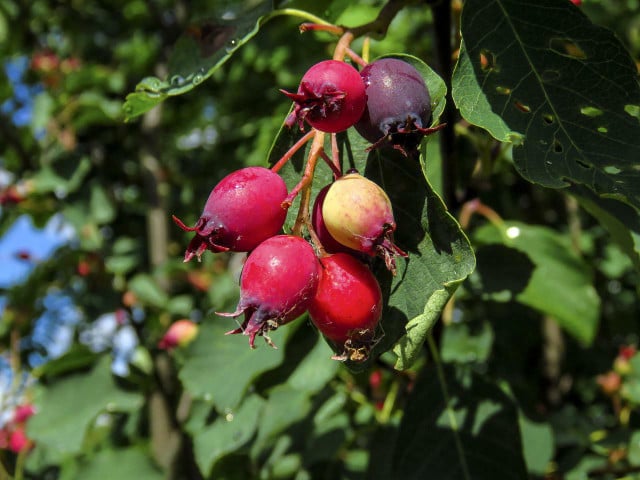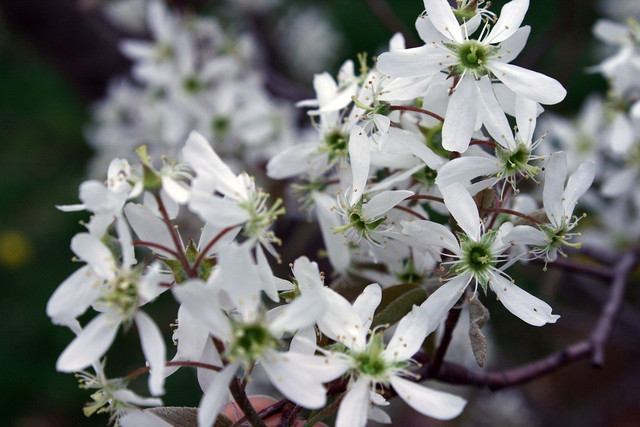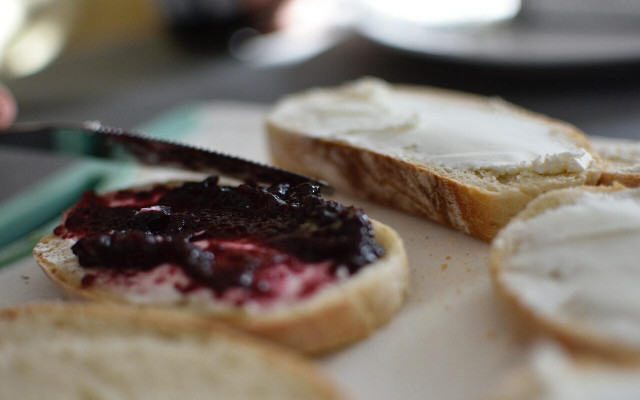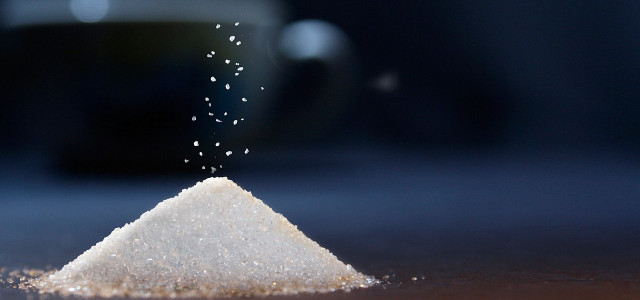The juneberry can be found all over the US and Canada. We’ll show you where to find wild juneberries, how to harvest them, and how to turn them into a delicious jam.
Juneberry trees are native to North America and ubiquitous throughout the US and Canada. For centuries, their bark, flowers, and fruits were employed in traditional medicine, and herbal treatments by indigenous peoples in both lands for centuries. They are so inextricably linked to the earth and to folklore that their fruit has been given numerous nicknames throughout the centuries, such as:
- Serviceberry
- Shadbush
- Wild currant
- Bilberry
- Chuckle-berry
- Sugarplum
- Saskatoon berries
Their scientific name is amelanchier.
As a tree, they are renowned for being resilient and versatile; they thrive in woodlands and stream banks and are sometimes seen in hedges. With the exception of Hawaii, every state in the US has at least one native species to call its own.
What Do Juneberries Look Like?

(Foto: CC0 / Pixabay / sergei_spas)
When it comes to detecting juneberries in the wild, there are a few tell-tale signs. These are some indicators:
- Small, soft pome (berry-like) clusters on short stalks resembling flowers
- Each pome contains 4 to 10 seeds
- These seeds are red, delicate, and shaped like teardrops
- Their skin has a squishy, fleshy texture and they develop to be around a half-inch long
- Depending on the species and variety, they start out green, then turn red, and finally develop to a dark purplish-black in late summer.
The seeds of juneberries are larger and more prominent than those of blueberries, although they are softer to the touch. They, too, are edible, much like the blackberry. Some people even claim the seeds have a flavor reminiscent of almonds when consumed.
While it’s ideal to consume the fruit fresh, it retains its firmness and overall shape even after being frozen for an extended period of time. Juneberries are sweeter and less tart than blueberries, with a flavor similar to dark cherries or raisins.
Also interesting: The Ultimate Guide to Edible Flowers and Their Uses
Harvesting Juneberries: When and How



(Foto: CC0 / Pixabay / lqlqlqlq75)
Branches of juneberries are thin, and the bark on the trees is scaly and varies in shade from gray to brown. Flowering occurs in April or May at the same time as the first leaves appear.
While they prefer soil that is moist and fertile, juneberries will thrive in almost any soil, and will tolerate part shade as well as full sun. Although flowering and pollination by bees and other insects occur in April or May, juneberry trees typically ripen in June and through to July.
If you want to eat their fruit, all you have to do is look for it. The US and Canada are home to a large number of them, and there are plenty of hotspots where the fruits of the juneberry tree can be found and harvested in the summer:
- United States: They can be found from Maine and the whole of the Atlantic coast all the way down to Alabama.
- Canada: Eastern territories ranging from Newfoundland west to southern Ontario
So, if you want to harvest juneberries yourself, all you need is a bucket. Never pick them when they’re yellow or red, be patient. Furthermore, it’s always a good idea to consult a local foraging expert if you’re unsure whether you’ve found the correct fruit. What you’ve found will be easier to decipher with their assistance. It’s better to be safe than sorry when foraging.
Reported Health Benefits of Juneberries
The stunning white blossoms of juneberry trees have made them a popular choice for landscaping and horticulture. When fall rolls in, their white leaves become a vibrant shade of orange-red and salmon-pink that’s truly breathtaking to behold.
Aside from aesthetic beauty, there are a myriad of other reported health benefits of the juneberry fruit. Some of the ways juneberries may support the body include:
- Supports the immune system
- Promotes good gum health
- Anti-oxidant content compliments skin and heart health
- Regulates bowels with fiber content
- Promotes stronger bones and teeth due to calcium content.
Juneberry Jam Recipe



(Foto: CC0 Public Domain / Unsplash / Mario Mesaglio)
Before we draw to a close, we’d like to leave you with a delicious juneberry jam recipe that will make your summer all that much sweeter. Not only is it incredibly simple to make and infinitely delectable to taste. It only requires three ingredients and can refrigerated for up to a week or more, but make sure that you sterilize the jar properly first before storage to prolong its shelf life.
Ingredients
- 1–2 cups of juneberries
- 2 tbsp of organic, unrefined white sugar
- 1 tbsp of water
Instructions
- In a small saucepan, combine the juneberries, sugar, and roughly a tablespoon of water.
- Boil uncovered for 15 minutes at medium-high heat, or until the berries begin to burst (break open). Using the back of a spoon, mash a few. The syrup in the jam should thicken as it cooks.
- Let it cool off. Fill up a few sterilized mason jars with the jam. Close lids, and refrigerate.
Read more:
- How to Find, Collect, and Use Elderberries
- Nutrition Secrets: Foods That Are Good for Skin, Hair, and Nails
- How to Store Blueberries to Keep them Fresh
Do you like this post?







